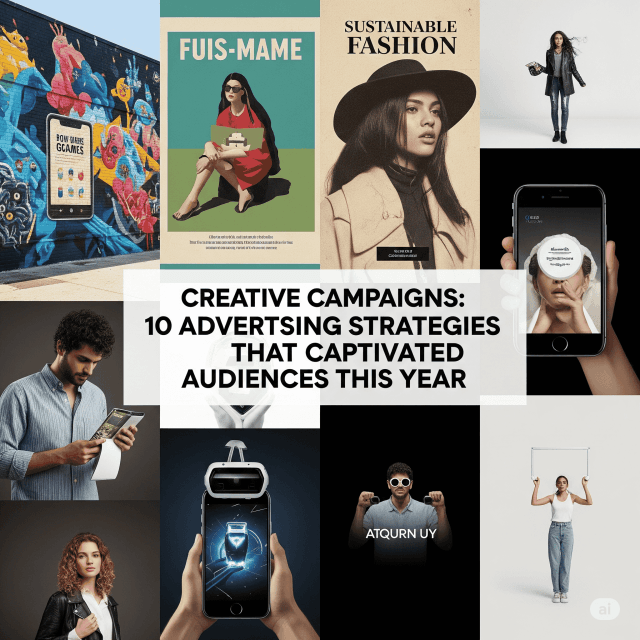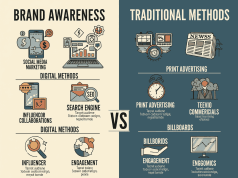In an era where consumer attention is more fragmented than ever, brands are compelled to innovate their advertising strategies to break through the noise. This year, several campaigns stood out for their creativity and effectiveness, successfully captivating audiences and driving engagement. Here are ten notable advertising strategies that made waves in 2023.
1. Storytelling Through Personalization
Example: Spotify Wrapped
Every year, Spotify invites users to relive their musical journey through its "Wrapped" campaign. This year, the platform enhanced personalization by creating artistic visuals and tailored messages that resonated with users’ unique listening habits. The emotional connection fostered by storytelling made it highly shareable across social media, generating significant buzz.
2. Cause-Driven Marketing
Example: Patagonia’s Environmental Advocacy
Patagonia continued to express its commitment to sustainability through its advertising campaigns. By promoting grassroots conservation efforts and donating profits to environmental causes, the brand not only reinforced its identity but also built strong community support. This strategy resonates deeply with environmentally-conscious consumers.
3. Immersive Experiences with Augmented Reality
Example: IKEA Place App
IKEA enhanced customer engagement by integrating augmented reality into its advertising strategy. The "IKEA Place" app allows customers to visualize furniture in their homes through their smartphones. This immersive experience not only simplifies the purchasing process but also makes the brand stand out in a competitive market.
4. Pop Culture Collaborations
Example: McDonald’s x BTS Meal
McDonald’s tapped into pop culture with the launch of the BTS Meal, which included specially selected menu items endorsed by the world-famous K-pop group. The collaboration generated significant media attention and social engagement, proving the power of aligning with influential cultural figures to boost brand visibility.
5. User-Generated Content Campaigns
Example: Dove’s #NoDigitalDistortion
Dove’s #NoDigitalDistortion campaign invited users to share unretouched photos, promoting body positivity and natural beauty. Encouraging consumer involvement not only built authenticity but also fostered a sense of community around the brand, positioning Dove as a champion of self-acceptance.
6. Humor and Relatability
Example: Old Spice’s "Moms" Campaign
Old Spice used humor effectively in its "Moms" campaign, which highlighted the amusing yet relatable aspects of parenting. By utilizing comedic storytelling, the campaign resonated with a wide audience and leveraged social media trends to amplify its reach, leading to increased brand affinity.
7. Interactive Content
Example: Starbucks’ Starbucks Odyssey
Starbucks introduced "Starbucks Odyssey," an interactive storytelling platform that combines loyalty rewards with a gamified experience. By engaging customers with challenges and rewards, the campaign not only promoted customer loyalty but also created a unique brand experience.
8. Nostalgia Marketing
Example: Coca-Cola’s "Real Magic" Campaign
Coca-Cola embraced nostalgia with its "Real Magic" campaign, which revisited classic imagery and themes from the brand’s storied history. By tapping into consumers’ fond memories, Coca-Cola effectively built emotional connections while reinforcing its brand identity.
9. Influencer Partnerships
Example: Fashion Nova’s Influencer Marketing
Fashion Nova leveraged influencer partnerships effectively, employing a diverse range of micro-influencers who authentically resonate with target demographics. This strategy not only built credibility but also expanded the brand’s reach across various social media platforms.
10. Sustainability Messaging
Example: Nike’s "Move to Zero"
Nike continued its dedication to sustainability with the "Move to Zero" campaign, emphasizing its commitment to reducing waste and carbon emissions. The campaign not only educated consumers on environmental issues but also aligned Nike’s values with a growing consumer demand for sustainability in fashion.
Conclusion
As consumer preferences evolve, brands must continually innovate to stay relevant. The above campaigns illustrate that creativity, authenticity, and emotional connection are critical components of successful advertising strategies in 2023. By embracing storytelling, leveraging technology, and focusing on community engagement, brands can captivate audiences and foster lasting loyalty in an increasingly competitive landscape.









